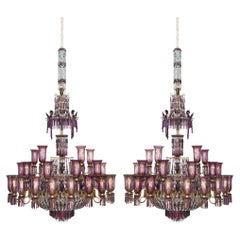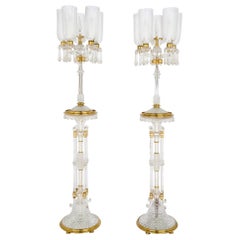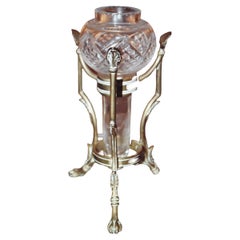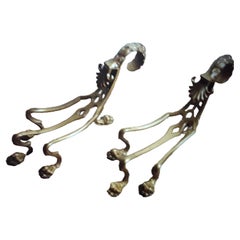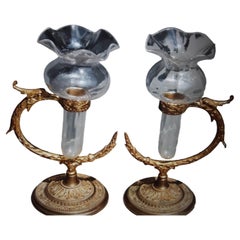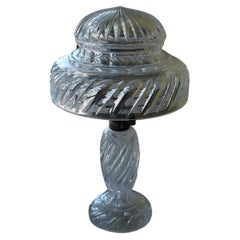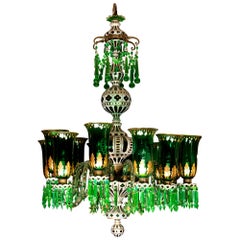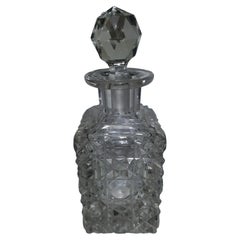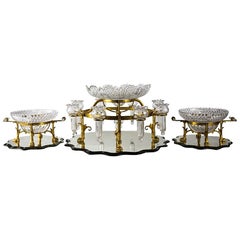F. & C. Osler On Sale
Antique Late 19th Century English Belle Époque Chandeliers and Pendants
Metal
Antique Late 19th Century English Belle Époque Floor Lamps
Crystal, Metal
Antique 1880s English Georgian Vases
Crystal
Antique 1880s English Figurative Sculptures
Bronze
Antique 1880s English Napoleon III Vases
Bronze
Antique 1870s English Napoleon III Table Lamps
Glass
Antique Late 19th Century English Victorian Chandeliers and Pendants
Cut Glass
Recent Sales
Antique 1840s English Art Nouveau Bottles
Crystal
Antique Mid-19th Century European Decorative Bowls
Ormolu
Antique 19th Century English Porcelain
Porcelain, Paint
Antique Late 19th Century English Victorian Chandeliers and Pendants
Cut Glass
People Also Browsed
Early 20th Century American Art Deco Chandeliers and Pendants
Metal
21st Century and Contemporary Chandeliers and Pendants
Murano Glass
20th Century Philippine Slipper Chairs
Cane, Wood, Shell
Vintage 1950s French Mid-Century Modern Candle Lamps
Crystal
Vintage 1950s French Mid-Century Modern Candle Lamps
Art Glass
Vintage 1950s Spanish Mid-Century Modern Chandeliers and Pendants
Metal, Iron, Gold Leaf
Vintage 1960s English Neoclassical Planters, Cachepots and Jardinières
Stoneware
Antique 19th Century Russian Sterling Silver
Silver
Mid-20th Century American Club Chairs
Linen
Antique Early 1900s French Art Nouveau Bird Cages
Iron
Early 20th Century French Art Nouveau Floor Mirrors and Full-Length Mirrors
Bronze, Ormolu
Antique 15th Century and Earlier Egyptian Egyptian Busts
Limestone
Antique Late 19th Century Irish Arts and Crafts Western European Rugs
Wool
20th Century Spanish Brutalist Flush Mount
Metal, Gold Leaf, Iron
Antique 19th Century American Beds and Bed Frames
Silk, Mahogany, Oak, Walnut
1920s Figurative Paintings
Oil
F. & C. Osler for sale on 1stDibs
British glassmakers F. & C. Osler redefined the art of cut-glass design in an era of Victorian luxury, refinement and grandeur.
The firm began in Birmingham in 1807 by Thomas Osler, who established his business making small glass ornaments and pieces for chandeliers. His sons, Follett and Clarkson Osler, joined the company and, in 1831, reorganized it as F. & C. Osler.
During the 1840s, F. & C. Osler expanded production to include the manufacture of chandeliers and glass furnishings, opening a second workshop in London in 1845. The company focused on producing large-scale designs, leading to the creation of one of their most famous pieces: the 27-foot-high, four-ton Crystal Fountain for London’s Great Exhibition in 1851. Another notable F. & C. Osler piece at the exhibition was a pair of eight-foot-high candelabras purchased by Prince Albert for Queen Victoria. Today, they are on display as part of the Royal Collection at Osborne House on the Isle of Wight.
The success of F. & C. Osler’s Crystal Fountain established the company’s reputation as one of the finest glassmakers of the 19th century. Wealthy clients coveted its cut-glass chandeliers, wall sconces, epergnes, candelabras and decorative centerpieces.
F. & C. Osler also received several important commissions. In 1856, F. & C. Osler designed a large chandelier for St. George’s Hall in Liverpool and a 36-light chandelier for London’s Mansion House. In 1858, they were asked to produce tableware for a banquet held by Queen Victoria at Aston Hall, in Birmingham. The Queen is said to have been so impressed with the glassware she asked permission to keep a champagne glass.
F. & C. Osler thrived throughout the late 19th century, experimenting with complex cut-glass motifs and expanding its successful export market to India. They became a favorite glassmaker for Indian royalty and aristocratic English ex-pats.
By the 1920s, demand for cut-glass products waned, and F. & C. Osler closed its Birmingham factory in 1922. The company remained in business, albeit on a much smaller scale, until 1976.
Today, F. & C. Osler remains a symbol of grand Victorian glassmaking and is sought by antique collectors and interior designers worldwide.
On 1stDibs, discover a range of antique F. & C. Osler lighting, decorative objects and serveware.
